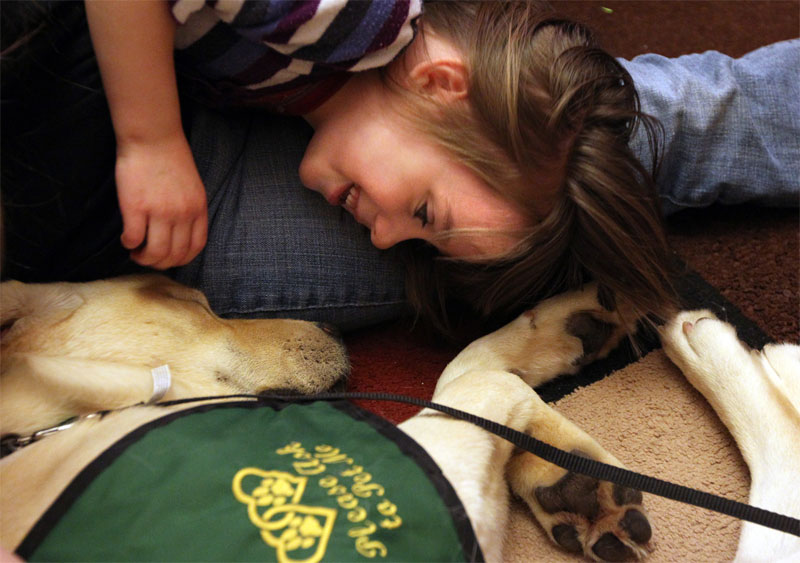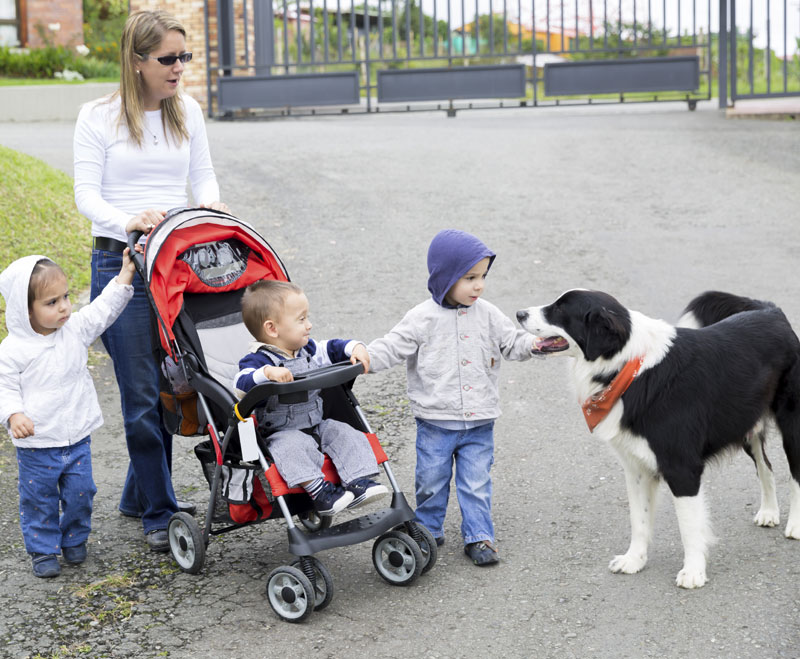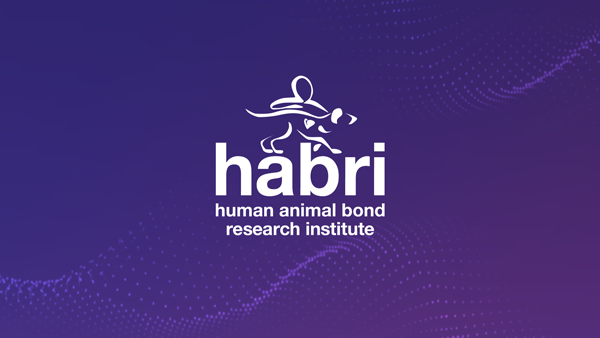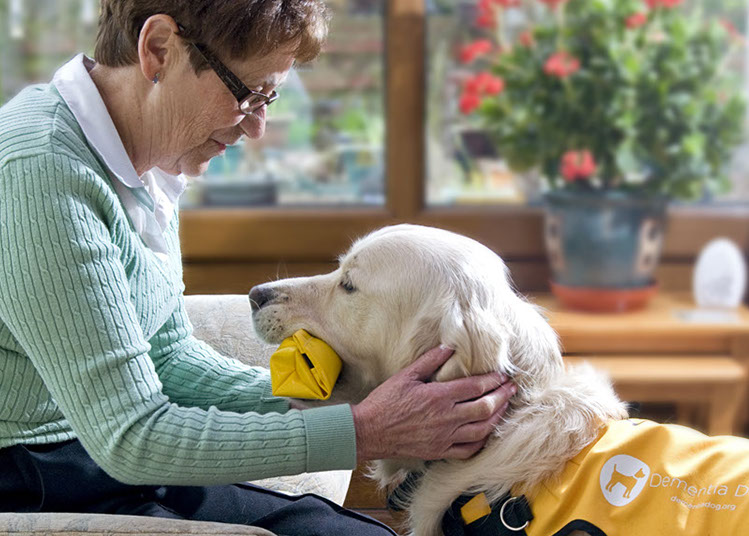Autism Spectrum Disorder (ASD) is a complex neurological and developmental disorder that begins early in life and affects how a person acts and interacts with others, communicates, and learns. Different people with autism can have different symptoms. For this reason, autism is known as a spectrum disorder—which means that there is a range of similar features in different people with the disorder.
Many children show symptoms of ASD by 12 months or earlier. Early signs of autism include problems with eye contact, no response to their name, poor imaginative skills, and problems with nonverbal communication.[1] In general, the main signs and symptoms of autism in older children relate to communication and interactions with other people, and routine or repetitive behaviors.
More information about ASD can be found here.

Organizations like the North Star Foundation provide specialized therapy dogs for those with autism spectrum disorders. Photo: North Star Foundation
Early diagnoses of and interventions for autism are more likely to have long-term positive effects on symptoms and later skills. Research strongly indicates that human-animal interaction is an example of an intervention that can benefit children with autism.
A review of current literature on the effectiveness of animal-assisted intervention (AAI) for children with ASD found AAI to be effective in a variety of ways, including:
- Increasing social functioning seen through:
- Increased social awareness
- Increased social interaction
- Decreased social isolation
- Increased social motivation
- Increased social skills and behaviors
- Increasing safety, independence and socio-emotional functioning[2]
Animal-Assisted Therapy
Research has demonstrated that Animal-Assisted Therapy (AAT) can be beneficial when combined or integrated into traditional interventions for children with ASD.
For example, one study compared children with autism receiving two forms of occupational therapy: one with standard techniques, and one incorporating therapy animals. Results suggest that children demonstrated significantly greater use of language and significantly greater social interaction in sessions that incorporated animals in comparison to children in sessions using exclusively standard occupational therapy techniques.[3]
Service Dogs
In a study assessing placement of a service dog with the families of children living with ASD, participants reported improved safety, motor function, calmness, and compliance with parents’ directives. Participants also reported an improvement in children’s daily routines and increased positive social acknowledgements. This study also found that family members reported a sense of security, independence, and integration into their community.[4]
A similar study found that parents reported decreased problematic behavior after introducing a service dog to families of children with ASD. The study also found that cortisol levels, used to measure stress, were considerably reduced when the dogs were present and increased again when dogs were removed from the family.[5]
Equine-Assisted Activities
A pilot study that assessed therapeutic horseback riding (THR) on children with ASD found that children who received THR displayed less irritability and hyperactivity than those in the control group. Additionally, children who received THR scored higher on social cognition and communication scales, in addition to speaking more words than those in the control group.[6]
This study was expanded into the first of its kind large-scale randomized controlled trial which found children and adolescents with ASD who received THR as an intervention had reduced irritability and hyperactivity levels compared to the control group. The THR group also scored higher in social cognition, including total words spoken and new words spoken.[7]
Another pilot study that assessed the impact of THR on social functioning in children with autism found that children exposed to equine assisted activities exhibited greater sensory seeking, sensory sensitivity, social motivation, and less inattention, distractibility and sedentary behaviors compared to children who did not receive THR.[8]
In a study of equine-assisted therapy (EAT) that included both work on the ground and riding, children who participated in EAT displayed higher level social and executive functioning compared to children in the control group.[9]
The long-term carryover effects and the ability to generalize learned skills to novel contexts are important to measuring the utility of any therapy. One study demonstrates that EAT programs result in sustained improvements in child and adolescent behaviors even after the completion of the intervention.[10]
Small Animals
While dogs and horses are often talked about in relation to their ability to benefit children with ASD, interventions with large animals can present feasibility and logistical challenges. Research indicates that interventions with small animals such as guinea pigs can be effective in benefiting children with ASD as well.
Results of a study of an 8-week animal-assisted activity (AAA) program with guinea pigs for 64 children with ASD in 41 classrooms demonstrated increases in social functioning.
Specifically, the study found that the children with ASD:
-
- Increased display of social behaviors including talking, making physical contact and looking at faces.
- Improved positive social behaviors including becoming more receptive to social advances from peers.
- The study concluded that animal-assisted interventions in classroom settings may be a feasible way to engage and improve the social functioning of children with ASD.[11]
A study observing the presence of guinea pigs in a classroom for children with ASD found guinea pigs increased the frequency of social contacts with acquaintances, and the children exhibited some aspects of social behavior that they did not exhibit in the absence of the therapeutic animal.[12]
Pet Ownership
In addition to HAI, HABRI-funded research has supported the benefits of pet ownership for children with autism and their families.
HABRI is currently funding a number of studies focused on the impacts of HAI on children with Autism Spectrum Disorder. Click here to learn more about these research projects.










